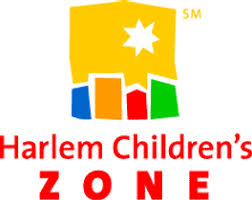As mentioned in the first blog assignment related to the HCZ, the Head Start program where I am employed, did participate in the Promis Neighborhood. In 2010, we were awarded an American Recovery and Reinvestment act expansion through the Department of Health and Human Services to expand programming to 20 children. The program was designed as a 6 hour day, five day per week, and 50 weeks per year operation. Parent provided input to help design the United Way Parenting Education Project. Some of the successes of the program included, average daily attendance of 95%, 62% of families received referrals to community provider for health care, drug/alchohol services, housing, employment, transprotation, food, or MH counseling services, 98% of parent participated in family goal setting and 78% achieved two or more goals, 97% of children had a medical home and health insurance as opposed to 68% in the beginning of the program, similarly, at the beginning of the year 60% of children were up to date on required physicals, dental exams, and immunization, where as at the end of the program, 98% of children were up to date. Academically 5%-50% of children were proficient in learning domains and by the end of the year 80%-95% demonstrated proficiency. Unfortunately, because the ARRA funding ended in September 2011, our agency is unable to follow these children and families through college as the program was intended to do.
Saturday, April 7, 2012
Sharing Web Resources Continued...
This week I chose to explore an article under the "ISSUE" section of the Harlem Children's Zone website. The article talks about the difficulty the program has in assessing the well-being of all children. There is progress being made on the national/state level, on the other hand, on small geographic levels, the capability to track important well-being indicators is weaker. There are very few indicators comparable across cities. At this time, a goal is to produce a set of core indicators for Promise Neighborhoods that assess a child's well-being at the city or neighborhood level. This issue coincides with our discussion this week about equity barriers in the early childhood field. Many barriers exist when linking a comprehensive, system-wide approach. Two of which include...attributing cause and effect is complex. A broad goal, such as reducing poverty may be difficult to reach, however having more narrow indicators, such as addressing poor nutrition and low-quality child care may be more attainable. Another challenge is the dearth of reliable indicator data at a community/neighborhood, or city level. Just as universal standards, universal preschools, etc. is a focus in the early childhood field, standards and indicators are also a priority for the Promise Neighborhood.
As mentioned in the first blog assignment related to the HCZ, the Head Start program where I am employed, did participate in the Promis Neighborhood. In 2010, we were awarded an American Recovery and Reinvestment act expansion through the Department of Health and Human Services to expand programming to 20 children. The program was designed as a 6 hour day, five day per week, and 50 weeks per year operation. Parent provided input to help design the United Way Parenting Education Project. Some of the successes of the program included, average daily attendance of 95%, 62% of families received referrals to community provider for health care, drug/alchohol services, housing, employment, transprotation, food, or MH counseling services, 98% of parent participated in family goal setting and 78% achieved two or more goals, 97% of children had a medical home and health insurance as opposed to 68% in the beginning of the program, similarly, at the beginning of the year 60% of children were up to date on required physicals, dental exams, and immunization, where as at the end of the program, 98% of children were up to date. Academically 5%-50% of children were proficient in learning domains and by the end of the year 80%-95% demonstrated proficiency. Unfortunately, because the ARRA funding ended in September 2011, our agency is unable to follow these children and families through college as the program was intended to do.

As mentioned in the first blog assignment related to the HCZ, the Head Start program where I am employed, did participate in the Promis Neighborhood. In 2010, we were awarded an American Recovery and Reinvestment act expansion through the Department of Health and Human Services to expand programming to 20 children. The program was designed as a 6 hour day, five day per week, and 50 weeks per year operation. Parent provided input to help design the United Way Parenting Education Project. Some of the successes of the program included, average daily attendance of 95%, 62% of families received referrals to community provider for health care, drug/alchohol services, housing, employment, transprotation, food, or MH counseling services, 98% of parent participated in family goal setting and 78% achieved two or more goals, 97% of children had a medical home and health insurance as opposed to 68% in the beginning of the program, similarly, at the beginning of the year 60% of children were up to date on required physicals, dental exams, and immunization, where as at the end of the program, 98% of children were up to date. Academically 5%-50% of children were proficient in learning domains and by the end of the year 80%-95% demonstrated proficiency. Unfortunately, because the ARRA funding ended in September 2011, our agency is unable to follow these children and families through college as the program was intended to do.
Subscribe to:
Post Comments (Atom)
Amanda,
ReplyDeleteI have been following your blog since the beginning of class. I have learned alot about this organizaiton through your reaserach. Continue to be the channel that is informing our class more about this organizaiton. Thanks for sharing!
Amanda,
ReplyDeleteAs I have said to a few others in the class, there are some very great blogs this course. Yours is one of them. I am always learning new things and I enjoy reading what you have written.